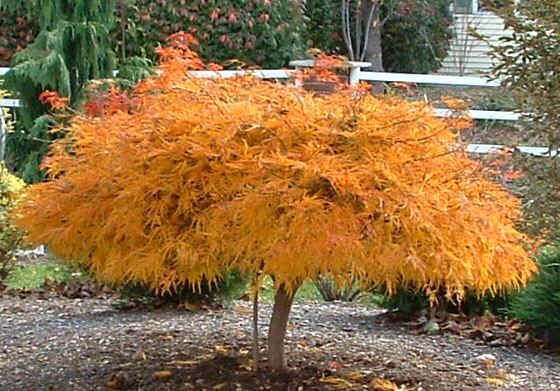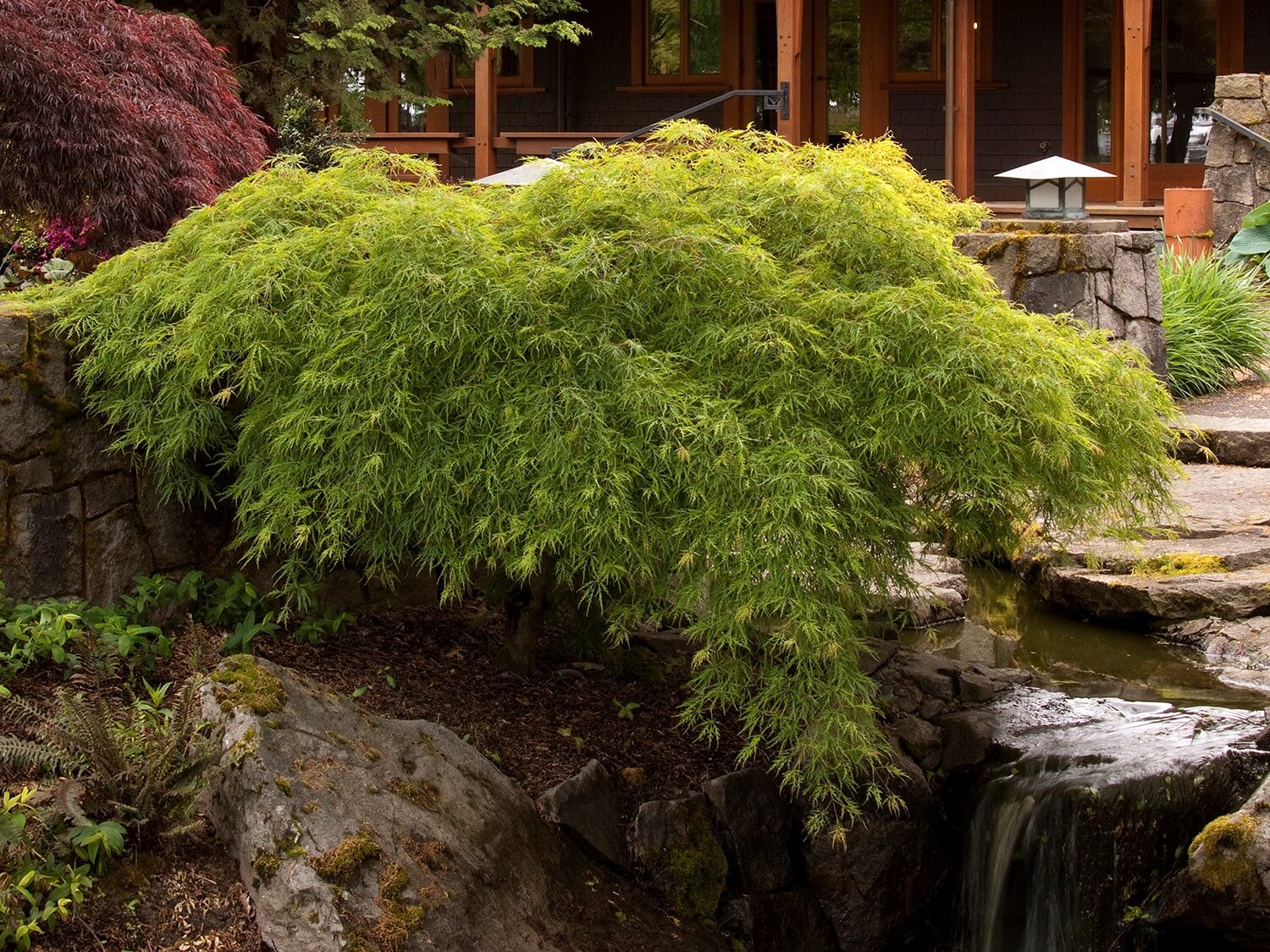

After the Waterfall Japanese Maple has produced leaves, it is easier to shape the tree and remove any branches that may be sticking out at odd angles. It is a good idea to remove branches that may be laying on top of each other, as these can rub together and create wounds in the bark over time, leaving the tree exposed to disease and pests. Dead or damaged wood should be removed as needed, especially in the spring when budless dead branches are easiest to see and reach. The Waterfall Japanese Maple is generally compact and slow growing, requiring little to no pruning. To fertilize, add a balanced, slow-release fertilizer to the area around the tree’s roots in early spring. Some signs of under-watered Japanese Maples include dry, crispy leaf edges. Water the Waterfall Japanese Maple regularly to maintain consistently moist soil, taking care to never let the roots dry out completely, especially in hotter climates. Japanese Maples grow best when planted in acidic, well-draining soil that is rich in organic matter. In hotter, drier regions, it is best to provide some protection from intense afternoon sun and heat to prevent the leaves from burning and the roots from drying out.
Waterfall japanese maple size full#
Waterfall Japanese Maple Careĭepending on the climate, Japanese Maples thrive in full sun to partial shade. You can surround it with low-growing perennials and annuals for a lovely garden vignette. The Waterfall Japanese Maples is typically used as a decorative statement piece because of its unique shape, size, and color. In addition, deer tend to leave Japanese Maples alone, allowing them to be placed in shadier woodland gardens. While these trees benefit from minor pruning and shaping, their small size and slow growth makes them a low maintenance tree. Once mature, the Waterfall Japanese Maple can be quite drought tolerant. Growing slowly 6 to 8 feet tall and 8 to 10 feet wide, the Waterfall Japanese Maple can fit snugly into many garden designs. In the fall, these petite trees shine with vibrant apricot leaves. It also nicely complements a water feature and makes a stunning patio display in a large decorative pot. With its delicate, feathery, apple-green leaves atop cascading branches, the Waterfall Japanese Maple is the perfect ornamental tree to create a focal point. Japanese Maples are known to be tough and adaptable trees but still require proper care and attention.To make a statement in a garden, nothing quite compares to a beautiful Waterfall Japanese Maple ( Acer palmatum dissectum ). Most of our Japanese Maples grow at a moderate rate and will need about 2-3 years to become firmly established in your landscape.

The growth rate of Japanese Maples depends on the specific variety, location, growing conditions, and care of the tree. In hotter climates, some afternoon shade is preferable to protect your tree from the harsh sun. Any area that receives about 4-8 hours of sunlight per day should suffice. However, choosing a more shaded planting area will lead to more vibrant and vivid foliage colors. Japanese Maples can grow in full sun or part shade. Remember to make your cuts with a clean, sterilized pair of shears and cut at a 45-degree angle. At this point, you can remove diseased, dead or broken branches, suckers and any competing branches for best growth. Wait until the dormant winter season to prune your Japanese Maple Trees. But no matter which variety (and size) you choose, you get a smaller silhouette that fits well into any space. That's because they are available in a variety of shapes, including vase-like with multiple trunks like the Bloodgood Japanese Maple and weeping like the Viridis Japanese Maple. Landscapers think outside of the box with Japanese Maples. The Coral Bark Japanese Maple even has a bright red trunk! How Big Do Japanese Maple Trees Get? Other Japanese Maples emerge from dormancy with dark shades of red that almost seem purple before turning green in the summer and bright red, yellow, or orange in the fall. Some varieties have leaves that emerge green before turning shades of bright or dark red. You will get more than a splash of color with Japanese maples for multiple seasons. Exotic good looks define this timeless variety, known for its blazing hues that last for months at a time.

There's nothing like the iconic Japanese Maple Trees, from their colors and sizes to their one-of-a-kind leaf shape.


 0 kommentar(er)
0 kommentar(er)
